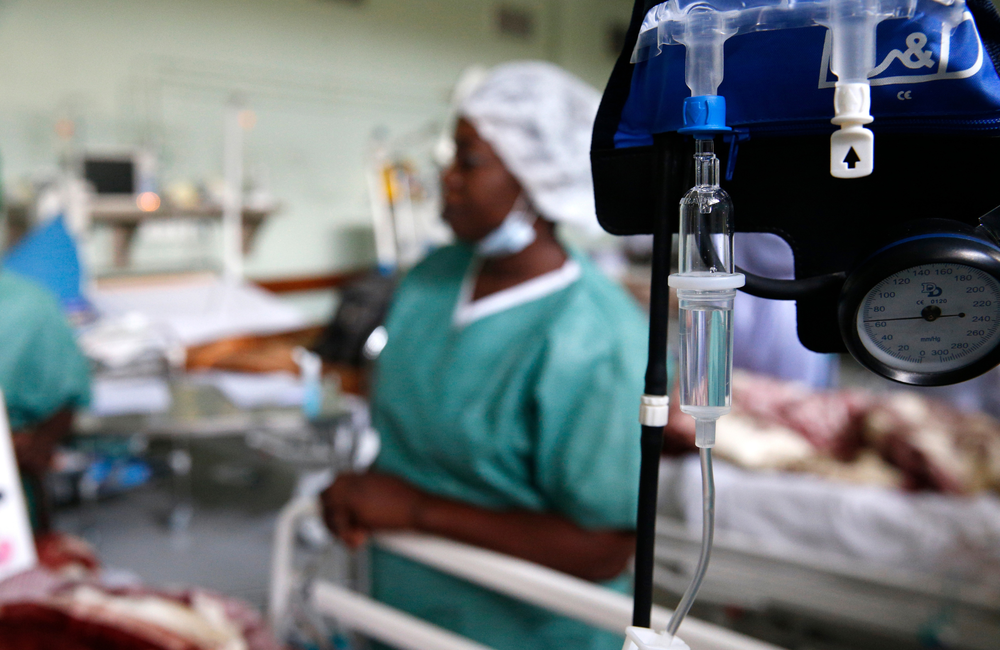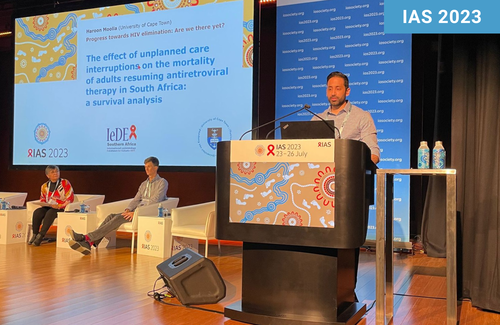
A study in Uganda has found that admission to hospital due to advanced HIV is predominantly attributable to treatment failure and lack of TB preventative treatment, not late HIV diagnosis.
Three-quarters of those admitted to hospital with AIDS-defining illnesses had already been diagnosed with HIV and two-thirds of those diagnosed with HIV had started antiretroviral treatment. The majority had been on treatment for more than two years.
The findings, published in the journal PLoS Global Health, are reported by Dr Lillian Tugume and colleagues at Makerere University, Kampala.
According to UNAIDS, 630,000 people died of AIDS-related illnesses in 2022, compared to 1.3 million in 2010. But continuing to reduce AIDS deaths requires improvements in HIV diagnosis and treatment initiation – and better adherence to treatment and retention in care.
Although poor retention in HIV care is widely recognised as a problem facing fragile health systems, with estimates that up to one-third of people who start treatment are lost to follow-up, it’s less clear what proportion subsequently die or end up in hospital with an AIDS-related illness.
Understanding more about the people who are admitted to hospital with AIDS-related illnesses is critical for directing efforts to improve the continuum of care and prevent people with HIV from being hospitalised.
To investigate the characteristics of people who are hospitalised with advanced HIV in the era of universal antiretroviral treatment, and to learn more about why they might have ended up in this situation, the researchers looked at people with HIV with CD4 counts below 200 or symptomatic HIV admitted to Kiruddu National Referral Hospital between November 2021 and June 2022.
They interviewed people with HIV or their next-of-kin after admission to hospital about their treatment history and adherence.
The study recruited 353 adults, 261 (74%) of whom had already been diagnosed with HIV. Almost two-thirds of those already diagnosed (62%) were taking antiretroviral treatment when they were admitted to hospital, and 40% of all participants in the study had been on antiretroviral treatment for at least six months. The median time since starting treatment was 28 months.
The most common diagnosis in people admitted to hospital was tuberculosis (TB) (61%), followed by cryptococcal meningitis (20%), oral, pharyngeal or oesophageal candidiasis (16%) or a bacterial infection (15%).
Twenty-nine percent of TB cases were diagnosed clinically, chiefly on the basis of chest X-ray (57%). The remainder (71%) were confirmed bacteriologically, mainly through the use of urine LAM alone (78%) or in combination with Xpert MTb/Rif testing of urine or sputum.
Just over a third of people admitted to hospital (38%) had no antiretroviral experience and of these, two-thirds (68%) had not been diagnosed with HIV before admission. Among those aware of their HIV status prior to admission, the median time between HIV diagnosis and hospital admission was six months, demonstrating serious shortcomings in linkage to treatment and care after diagnosis.
Of the 216 people on antiretroviral treatment, two-thirds (66%) had been on treatment for at least six months, 7.5% for between three and six months and the remainder for less than three months. Those on treatment for less than three months had the lowest median CD4 counts (63), although the difference between the groups was non-significant.
The study could not identify which patients had been lost to follow-up as it was not possible to link to medical records. However, 36% of ART-experienced participants reported they had interrupted treatment for at least one month prior to hospital admission.
People admitted to hospital after starting treatment differed in several respects from people with no antiretroviral treatment history. Previously treated people were somewhat older (39 vs 35 years) and had higher CD4 counts (101 vs 32) but there was no significant difference by gender (just over half were male in both groups) or by vital signs on laboratory tests.
Analysis of HIV treatment history showed that people who had been admitted to hospital after being on treatment for at least six months were more likely than people on treatment for shorter periods to be taking a regimen containing a non-nucleoside reverse transcriptase inhibitor (15% vs 6%, p<0.001) or a protease inhibitor (11% vs 6%, p=0.002) and less likely to be taking dolutegravir (38% vs 69% in people on treatment 3-6 months and 93% < 3 months, p<0.001).
They were more likely to report suboptimal adherence (missing at least two doses in the previous month) (50% vs 21% vs 32%, p=0.038) and more likely to be unable to report what antiretrovirals, if any, they were taking at the time of hospital admission (35% vs 19% vs 7%, p<0.001).
The study investigators note that around one-third of people on treatment for more than six months were not taking dolutegravir. They ask whether this represents a system failure to switch these patients to dolutegravir. However, two-thirds of those on treatment for more than six months were prescribed dolutegravir, suggesting that poor adherence is also an important factor leading to their hospitalisation. The investigators say that more research is needed on the use of long-acting antiretroviral treatment in people with advanced HIV and treatment failure.
But as most admissions were attributable to tuberculosis, the investigators say the other major factor that must be addressed is strengthening tuberculosis preventative treatment in people with advanced HIV. Even though people with HIV in this study had been taking antiretroviral treatment for at least six months, it did not appear to protect them against the development of TB (although the investigators do not report if there was any difference in TB diagnoses between treatment-experienced and untreated people or by duration of antiretroviral treatment).
The World Health Organization has set the target that 90% of people with HIV should receive a TB preventative treatment (TPT) by 2025, either in the form of 6-9 months of isoniazid or a shorter course regimen combining isoniazid with rifapentine or rifampicin.
Research in Uganda and South Africa shows that a series of barriers to optimal uptake of TPT need to be overcome. Lack of testing for latent TB, lack of an offer of TPT and poor adherence to TPT are important patient-level barriers. Structural barriers including lack of knowledge and confidence in TPT among healthcare workers, lack of time to initiate patients on TPT, drug stock-outs and lack of awareness of TPT among people with HIV also explain sub-optimal uptake.
The study investigators say that in Uganda, reducing hospitalisation due to advanced HIV requires a greater focus on TB preventative treatment, a faster transition of patients to dolutegravir-based treatment and evaluation of long-acting injectable treatment with cabotegravir and rilpivirine to see whether it overcomes adherence problems and reduces treatment failure in their setting.
Tugume L et al. Clinical characteristics and morbidity among hospitalized adults with advanced HIV disease in Uganda during ‘test and treat’ era. PLoS Global Health, published online 18 October 2023 (open access).

